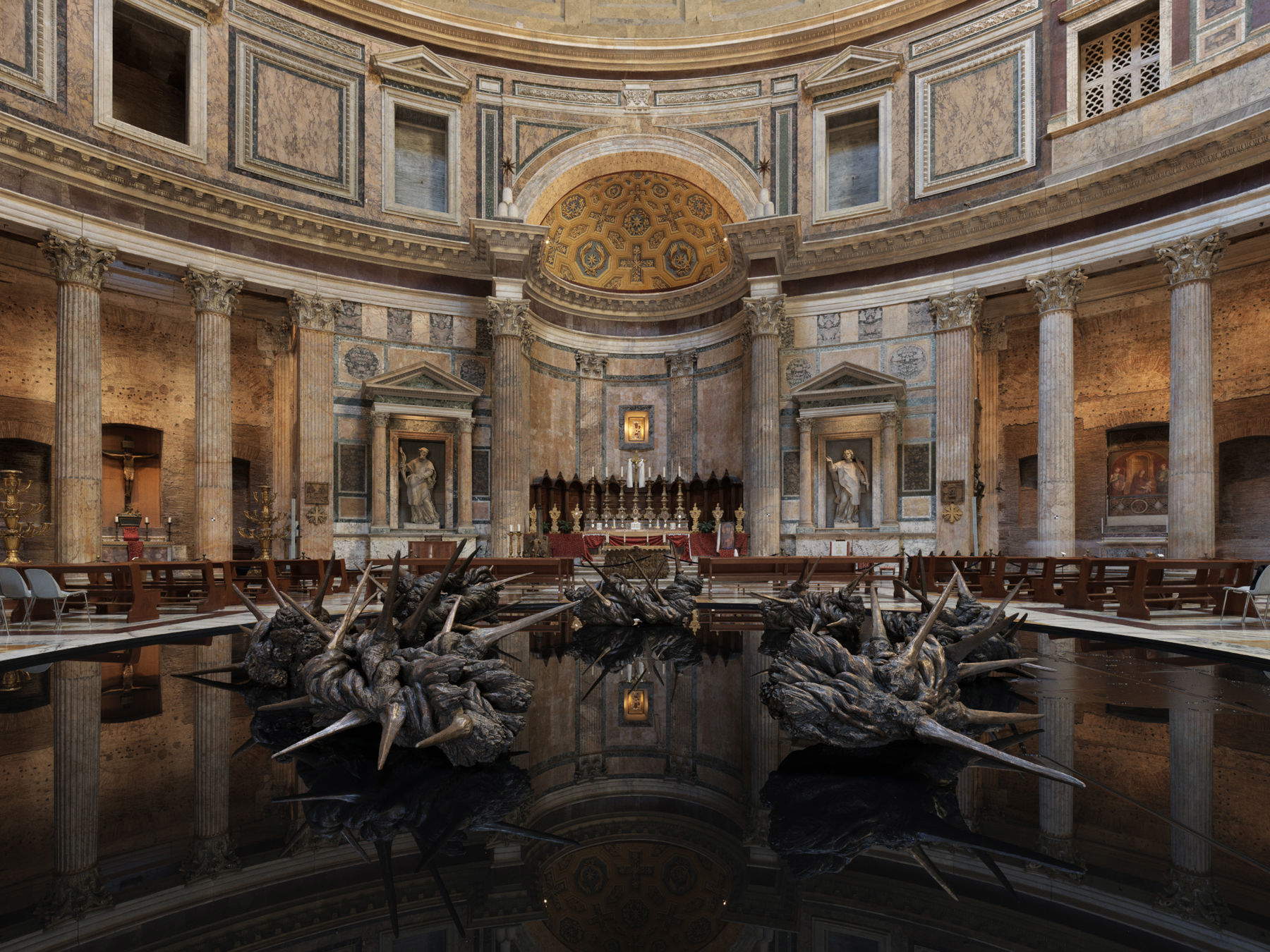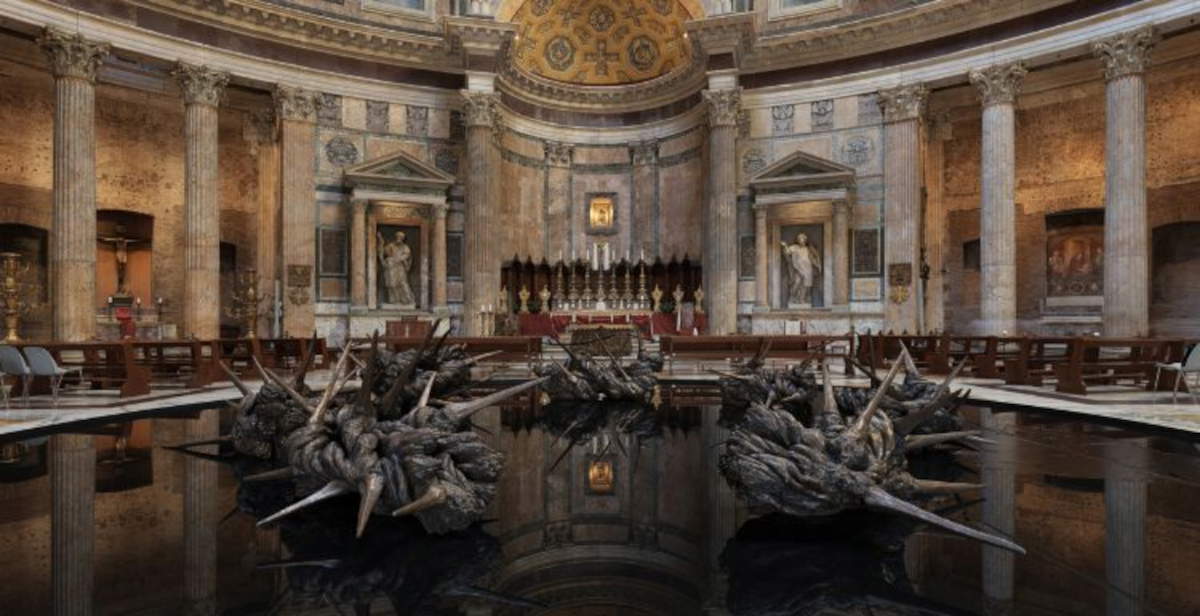The installation Corona Gloriae by Austrian artist Helga Vockenhuber was inaugurated on July 2 at the Pantheon - Basilica of Santa Maria ad Martyres in central Rome. The work, which can be seen until Sept. 16, 2025, is part of the cultural initiatives related to the Jubilee Year and is presented as a visual and symbolic interrogation of the meaning of human suffering and the possibility of redemption.
Promoted by the Pantheon and Castel Sant’Angelo Institute - National Museums Directorate of the City of Rome, in collaboration with the Embassy of Austria to the Holy See and the Basilica itself, the initiative enjoys the patronage of the Dicastery for Evangelization - Jubilee 2025. The artistic intervention is curated by Don Umberto Bordoni and Giuseppe Cordoni, who were already involved in the previous presentation of the work in 2023 at the Basilica of San Giorgio Maggiore during the Venice Biennale.
The installation consists of seven bronze sculptures that evoke the crown of thorns, the central symbol of Christ’s Passion. At the Pantheon, the arrangement of the works was entirely rethought in dialogue with the architectural space, according to a site-specific logic. The seven bronze fragments, twisted and pointed, were placed directly under the oculus of the great dome, exploiting natural light as an integral part of the composition. The structure is reflected on a pool of water placed at the base, contributing to an effect of suspension and precariousness that recalls the abyssal dimension of pain.

In the artist’s vision, the crown becomes a broken and open form. The seven elements that compose it recall a recurring number in biblical symbolism and represent the possibility of a crossing of pain, which is recognized and shared. The work suggests salvific potential, proposing an image of hope that is also possible for the contemporary condition, marked by global crises, conflicts and existential fractures.
The installation’s zenithal position under the Pantheon’s oculus reinforces its symbolic meaning: the light penetrating from above illuminates the broken crown, transforming it into a kind of Christian epiphany, consistent with the Basilica’s dedication to the Martyrs. The sacred space is described as a place that welcomes and redeems human drama. The crown, fragmented but not disintegrated, becomes a metaphor for the human condition wounded but still oriented toward a possibility of recomposition.
Helga Vockenhuber, active on the international scene, has already proposed the project in a first version at the Basilica of San Giorgio Maggiore in Venice. The Roman one, however, is not a simple transposition: the artist has reworked the installation taking into account the historical and liturgical context of the Pantheon, the circular architecture of the dome and the specific meaning that the crown of thorns takes on in the place where the memory of the martyrs is foundational. The project received support in its initial phase from Father Abbot Stefano Visintin OSB and Carmelo A. Grasso, Institutional Director of the Abbey of San Giorgio Maggiore - Benedicti Claustra Onlus.
Born in 1963 in Mondsee, Austria, Helga Vockenhuber is a sculptor who focuses her artistic research on the fundamental themes of the world’s religions. Central to her work is the religious dimension inherent in human beings, along with those boundary spaces that encourage recollection and meditation, opening the way to a deeper understanding of self. Through his works, the artist intends to give form and voice to the dignity of man and his spiritual interiority, highlighting his radical uniqueness.
 |
| A broken crown under the Pantheon's oculus: Helga Vockenhuber and the Christian Passion |
Warning: the translation into English of the original Italian article was created using automatic tools. We undertake to review all articles, but we do not guarantee the total absence of inaccuracies in the translation due to the program. You can find the original by clicking on the ITA button. If you find any mistake,please contact us.